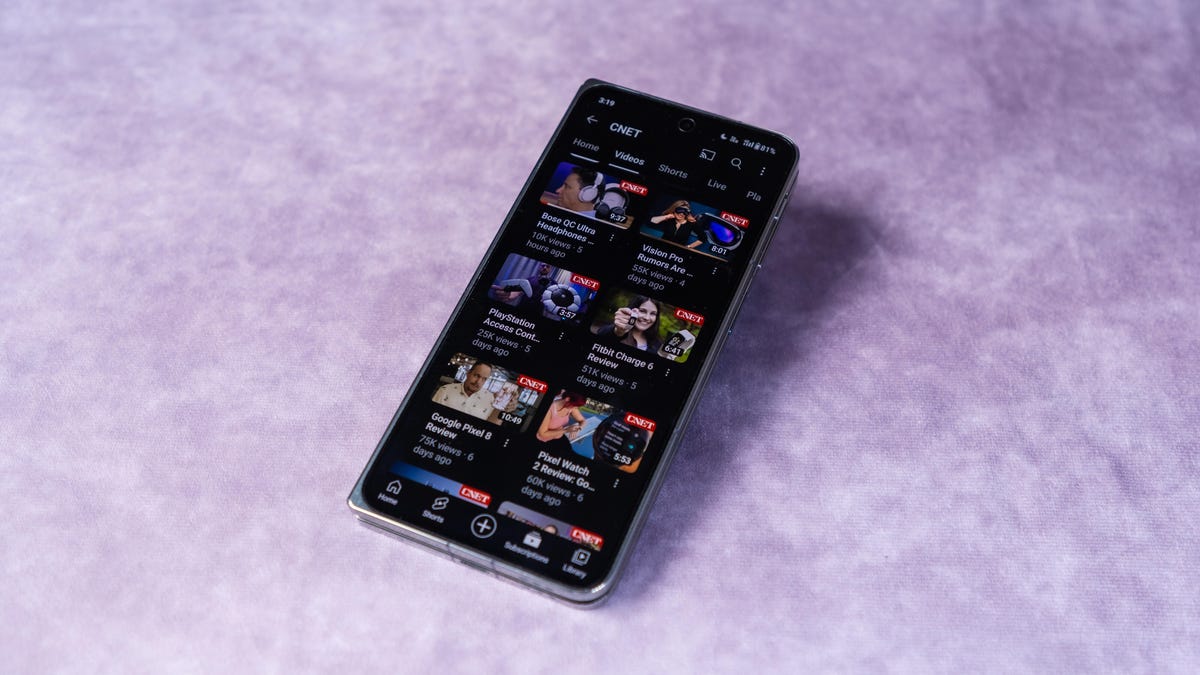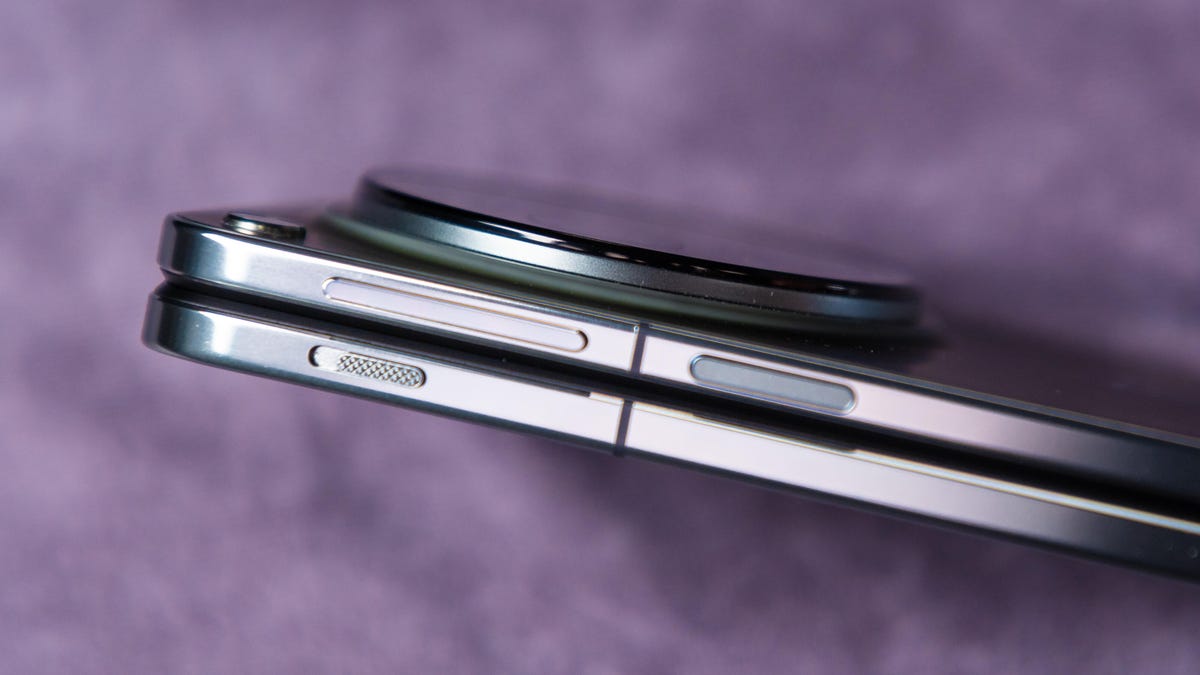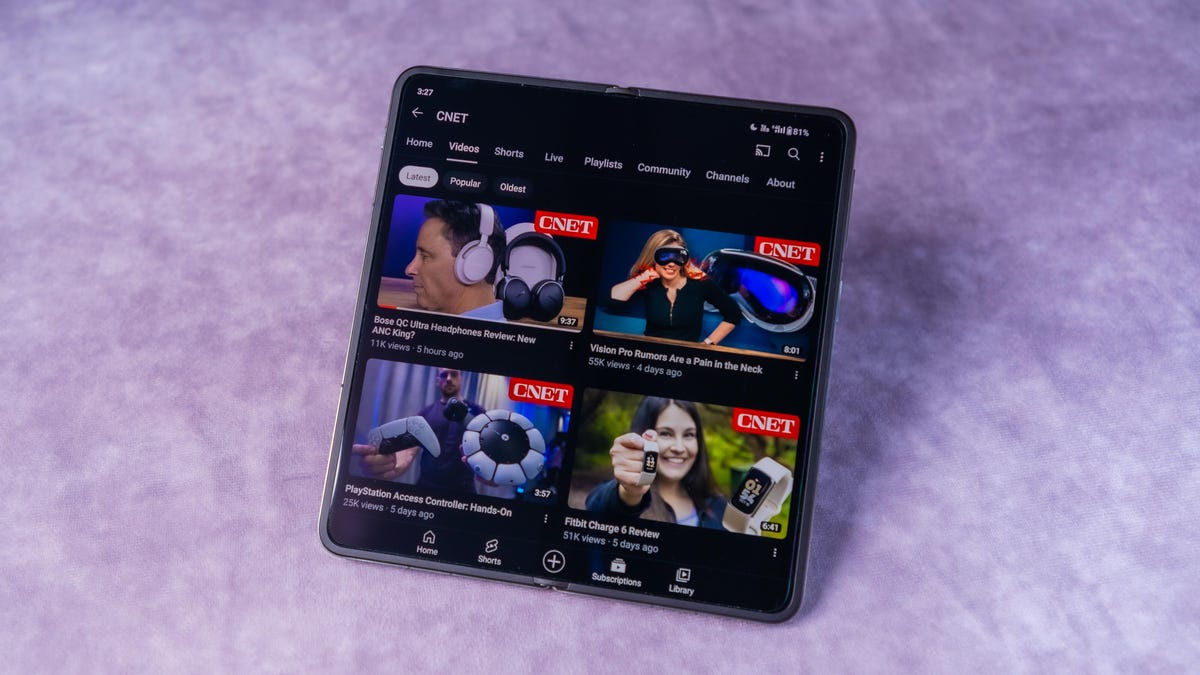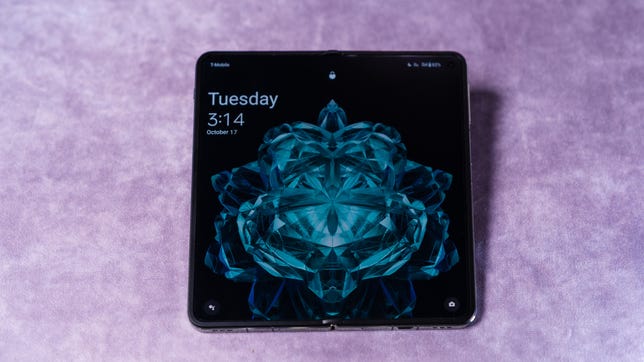OnePlus built its brand on the idea of “never settling” for compromises from your phone. Its first foldable, the $1,700 OnePlus Open, certainly delivers on that premise with impressive hardware (even with a few bizarre omissions). But its software and value, particularly in the US, make it a hard sell compared to established foldables like Samsung’s Galaxy Z Fold 5.

The front display on the OnePlus Open is a bit wider and easier to use than the Galaxy Z Fold 5’s front screen.
Design-wise, the OnePlus Open is more of a hybrid between Google’s Pixel Fold and the Z Fold 5. The 6.31-inch front screen isn’t as wide as the Pixel’s 5.8-inch display, but it is significantly more comfortable to hold and use than Samsung’s 6.2-inch screen on the Z Fold 5.
There’s a 7.82-inch display on the inside, which is slightly larger than Google and Samsung’s 7.6-inch options. Both the front and interior screens are vibrant OLED panels capable of 2K resolution, and they each support variable refresh rates up to 120Hz. The larger tablet-size display is capable of going all the way down to 1Hz, which can allow for smoother scrolling and gaming, or more efficient battery life (the front display can go down to 10Hz).
What impressed me the most about the hardware is how thin OnePlus has made the Open, and how the company seems to have almost completely minimized the larger display’s crease.

The OnePlus Open is thinner than Samsung’s Galaxy Z Fold 5 and Google’s Pixel Fold. The Open also keeps OnePlus staples like the alert slider.
Opening up the Open is easy and effortless. The hinge doesn’t require the same amount of force I’ve had to use on other foldables, like the Pixel Fold or Z Fold 5. I’ve only had the phone for a few weeks and obviously can’t predict how this will last over months or years, but my early impressions are encouraging.
If your phone does have issues, OnePlus says you’ll need to reach out to them directly as opposed to using any specific repair shops in the US.
The company tells CNET that in addition to its normal warranty, “we will bring in insurance services like OnePlus Care and will introduce a new service of exchanging a device instead of repairing the original.” OnePlus adds that the new service will run $99 and that “if customers need any repairment under the standard warranty policy, OnePlus will replace it to a new or refurbished device.”
OnePlus will also be offering a “60% discount on this price when buying a device at launch on Oct. 26.”
Benchmarks, battery and interesting hardware choices
Like the Z Fold 5, a Qualcomm Snapdragon 8 Gen 2 processor runs the show, though OnePlus ups the RAM to 16GB compared to Samsung’s 12GB on the Z Fold 5 (there is only one storage option for the Open, 512GB). Performance is zippy, with apps opening quickly.
The phone supports 5G on AT&T, Verizon and T-Mobile’s respective networks, and I had no issues when popping an AT&T or T-Mobile SIM card into the device. No US carrier will be selling the Open directly, however, though OnePlus will be selling the phone unlocked from its website as well as Amazon and Best Buy.
For benchmark fans, here is how it stacks up in our tests:
Benchmark testing results
Finally, OnePlus made a few interesting choices on the hardware side. First, there’s the battery.
The 4,805-mAh cell provided impressive battery life and regularly lasted throughout the day even when watching plenty of videos, snapping photos and WhatsApp-ing. I often relied on the larger internal screen for most of these tasks.
In a bit of a break from the norm, OnePlus includes a 67-watt charger in the box (albeit one that is USB-A to USB-C). That wired charging took me from empty to 25% in under 8 minutes, around 43% after 15 minutes, and up to 50% in around 18 minutes. A 30-minute charge got me from empty to 76% and getting to 100% took less than 44 minutes.
Running CNET’s 45-minute endurance test — where I streamed YouTube TV, browsed TikTok, played a few races of Asphalt 9, did a WhatsApp video call, and browsed the web using the larger internal display and while connected to Wi-Fi — the Open fell from 100% to around 88%. This is on par with a similar test on the Z Fold 5, but worse than the Pixel Fold, which only had a 5% drop in battery.
45-minute battery endurance test
Lower percentages are better.
Now the odd parts. OnePlus does not support wireless charging on the Open, which is surprising given how commonplace that feature is on modern smartphones, particularly considering this phone costs well over $1,000. The Open’s lack of wireless charging feels like we’re back to the 2019 OnePlus days.
With an IPX4 rating, the Open is also less durable than Samsung’s Z Fold 5 when it comes to water, but it still can handle splashes. Samsung’s foldable is IPX8-rated, which means it can handle a drop in water (though as neither foldable is suitable for dust, you shouldn’t rush to take them to the beach).
While OnePlus didn’t give the Open wireless charging or more advanced water and dust protection, it did throw in one other odd feature: An IR blaster for using your phone as a remote control. OnePlus includes a handy IR Remote app on the phone that allows for easy setup of devices ranging from cable boxes and TVs to electric heaters and air purifiers.
I tried it out on a few different TVs and it worked surprisingly well, even if IR blasters feel like a 2013 feature, not a 2023 one.
Cameras: What you’d expect from OnePlus

An ultrawide shot from the OnePlus Open.

6x zoom on the OnePlus Open.

Night photo from the OnePlus Open, taken after the recent software update.

A group selfie using the 32-megapixel camera from the front screen on the OnePlus Open.
Like other foldables, OnePlus allows you to use the more powerful rear cameras together with the outer screen for selfies. While it’s a bit more cumbersome to hold, it is a nice touch and a good use of the more capable lenses.
Software: Lacking foldable polish
OnePlus has long offered a close-to-clean Android experience, and with its OxygenOS it largely continues that trend. The phone ships with OnePlus’ OxygenOS 13.2 software, which itself is built upon Android 13. OnePlus promises four years of major Android OS upgrades and five years of security updates.
The company says that Android 14 will arrive “around” the end of the year.
As has been the case with its other devices, the Open has a handful of OnePlus apps like “Zen Space” (for disconnecting from your phone) and “O Relax” for unwinding, but neither is particularly noteworthy. They aren’t especially useful, and I found myself ignoring them.
There is also an interestingly named “Clone Phone” app for transferring data from an older device to the Open (or from the Open to a newer device).


